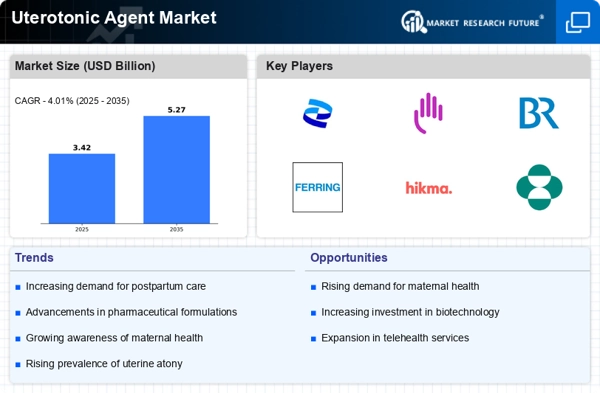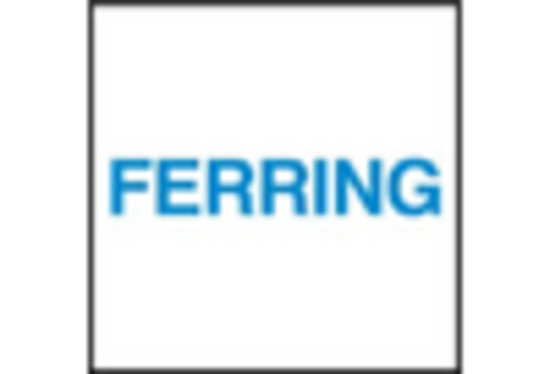Government Initiatives and Funding
Government initiatives aimed at improving maternal health are significantly impacting the Uterotonic Agent Market. Various health organizations and governments are investing in programs that promote safe childbirth practices and the use of uterotonics. Funding for maternal health initiatives has increased, with many countries implementing policies that support the availability of essential medicines, including uterotonics. This financial backing is expected to enhance access to these agents in low-resource settings, thereby expanding the market. As governments continue to prioritize maternal health, the demand for uterotonics is likely to rise, fostering growth in the industry.
Increasing Awareness of Maternal Health
The Uterotonic Agent Market is experiencing a surge in demand due to heightened awareness surrounding maternal health. Educational initiatives and campaigns aimed at promoting safe childbirth practices have led to an increase in the utilization of uterotonics. According to recent data, the prevalence of postpartum hemorrhage, a significant cause of maternal mortality, has prompted healthcare providers to advocate for the use of uterotonics during and after delivery. This growing recognition of the importance of maternal health is likely to drive the market forward, as more healthcare facilities adopt protocols that include uterotonic agents to ensure safer childbirth outcomes.
Growing Focus on Evidence-Based Practices
The Uterotonic Agent Market is witnessing a shift towards evidence-based practices in obstetric care. Healthcare providers are increasingly relying on clinical guidelines and research to inform their use of uterotonics during labor and delivery. This trend is supported by a growing body of evidence demonstrating the effectiveness of uterotonics in reducing the risk of complications such as PPH. As more healthcare institutions adopt evidence-based protocols, the demand for uterotonics is expected to increase. Market analysis indicates that this focus on evidence-based practices could lead to a more standardized approach to uterotonic use, ultimately benefiting maternal health outcomes.
Rising Incidence of Postpartum Hemorrhage
The Uterotonic Agent Market is significantly influenced by the rising incidence of postpartum hemorrhage (PPH), which remains a leading cause of maternal morbidity and mortality. Recent statistics suggest that approximately 5% to 10% of women experience PPH after childbirth, necessitating the use of uterotonics to manage this condition effectively. The increasing recognition of PPH as a critical health issue has led to enhanced training for healthcare professionals and the implementation of guidelines that emphasize the use of uterotonics. This trend is likely to bolster the market, as healthcare systems prioritize the availability and administration of these agents to mitigate risks associated with childbirth.
Technological Innovations in Uterotonic Agents
Technological advancements are playing a pivotal role in the Uterotonic Agent Market. Innovations in drug formulation and delivery systems have enhanced the efficacy and safety profiles of uterotonics. For instance, the development of long-acting formulations and novel delivery methods, such as subcutaneous or intranasal routes, has improved patient compliance and outcomes. Market data indicates that these advancements are expected to contribute to a compound annual growth rate (CAGR) of approximately 6% in the uterotonic segment over the next five years. As healthcare providers increasingly adopt these innovative solutions, the market is poised for substantial growth.


















Leave a Comment